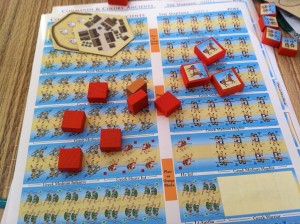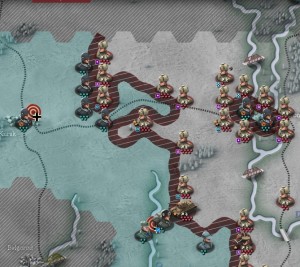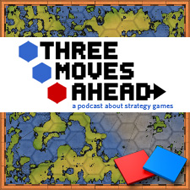While doing my weekly conference call with Dirk Knemeyer regarding the board game we are working on, we got onto the topic of components. Well, not exactly. We got onto the topic of math and measurements and geometry, but basically it came down to what we expect from components.
When people praise a board game, they’ll often talk about the quality of the components. Is it a good solid board? How big is the typeface? Are the playing pieces symmetrical or well-drawn? Components are very important for drawing in players; we all remember the childhood fights over who got to be the car in Monopoly. And I think that the fact you are using plastic army men accounts for a lot of the popularity of Memoir ’44.
We can’t lose sight, however, of the fact that component quality is about more than mere artistry or selling a theme. Good components are integral to making a game, if not easier to understand, at least more fun to want to understand. You can argue about whether Command and Colors: Ancients really needs to make you apply 200 stickers with each new expansion, but the high quality wooden pieces with distinct symbols on the images’ upper right conspire to make C&C feel like you are pushing old fashioned wargame blocks around. The terrain tiles are perfectly clear and you rarely need that many to make a battle map. The original boards were crap, but mounted boards have since been released.

On the other even simpler side, you have A Few Acres of Snow, with simple wooden blocks and discs, along with cards with a symbolic language so clear that you can teach the basics of movement in two turns; your pupil will not get confused because the card components make it almost impossible for a literate person to get lost. (I am still confused on sieges, but that’s a rules thing.)
When we talk about computer strategy games, or at least when we in the media talk(ed) about them, we rarely speak the language of components. We talk in terms of graphics and UI which are software terms, not game terms. It’s part of the messy legacy of computer gaming, the same legacy that relegated any discussion of games to the tech pages of major media and not the culture pages.
The problem is that graphics are, like meeple art, just a single part of the component problem in a strategy game. And graphics in most video games can be really indistinct from UI in many ways. Setting unit paths in a Paradox grand strategy game, for example, is a matter of UI (left click select unit, shift-right-click to set waypoints) but the progress of movement, style of the movement arrow and other things are graphics. Being able to recognize a unit at all is the perfect blend of graphics and UI.
Now, in a computer game, components can be purely artistic. To go back to the Paradox games, I am one of those suckers that bought every single unit sprite pack for Europa Universalis 3, even though I haven’t bought Atom Zombie Smasher. Unique uniforms for all the major (and some minor) European powers! It’s not like I had any difficulty distinguishing between the French and the Spanish, but this is just nicer in a silly way.

I think of components when I look at Unity of Command. As Bruce so eloquently laid out on the podcast last week, the art of the units is distinct enough to know that your crappy Hungarians are going to get rolled over in turn one, so hide the schnitzel. But take a look at the entire board. Unit supply and strength are not disaggregated numbers – strength is marked by a circle, supply is when that circle is blue. Supply points (this game is really all about logistics) are easily found with a single keypress, but the only information you really need is where supply ends; this is the information that UoC throws in your face.
I think of components when I think about Age of Empires. Bruce Shelley pointed to the setting of the game as a design strength because the units’ abilities and purposes were apparent simply by looking at them. Archer? Archer on horseback? Spear guy? You needed to know almost nothing to know what did what. Age of Kings added very distinctive unique units, more distinct components than you would find in the otherwise superior Rise of Nations.
I think that strategy game criticism in general would be better served if we started adopting the component mentality that you see in board game criticism. No, some very complex strategy and wargames cannot have simply intuitive components. There is no reason to expect a deep and comprehensive game like War in the East to break new records for transparency (even though it is actually elegant in many ways.) The components in use must fit the design in order to make sense, and if they don’t then you end up with too many menus or an abstraction too far.
But if we can get to the point where we accept that – for game spaces – appearance and functionality are intimately related, and that the old canard that “graphics don’t matter” is just plain silly when you have to actually look at how units, maps and information are best displayed then we can actually understand design better.
By focusing on components instead of “graphics” we can get away from the idea that realism or traditional portrayals of strategic elements are necessarily the best way forward for design in the genre.




